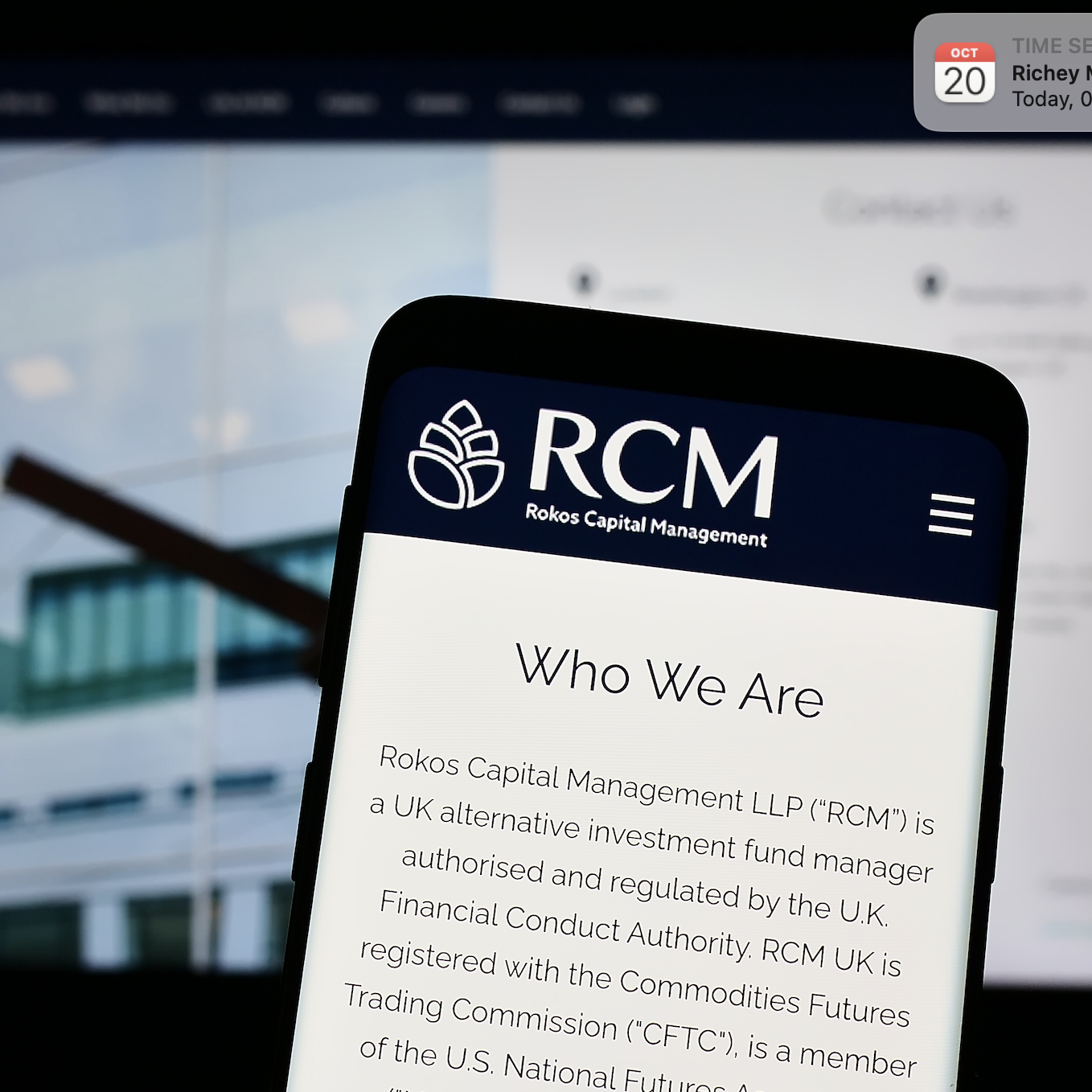Altana Wealth, the credit, currencies and special situations-focused hedge fund led by industry veteran and former Trafalgar Asset Managers co-founder Lee Robinson (pictured), is gearing up to launch a new strategy that will capitalise on the fast-growing SPAC sector.
Altana Wealth, the credit, currencies and special situations-focused hedge fund led by industry veteran and former Trafalgar Asset Managers co-founder Lee Robinson (pictured), is gearing up to launch a new strategy that will capitalise on the fast-growing SPAC sector.
SPACs, or special purpose acquisition companies, raise capital from investors, via IPOs, to buy shares in private companies, with a view to taking them public, typically through a merger with the publicly-traded SPAC.
Shareholders can then either choose to participate further with the merger as an investor, or redeem stock for the cash held in escrow following a takeover – an event driven optionality Robinson sees as “highly attractive.” Should no takeover targets be found within two years, the SPAC dissolves, with cash returned to investors.
Altana’s new strategy will aim to capitalise on the burgeoning SPAC sector by building a diversified portfolio of SPACs, investing at, or near, cash value – both in the IPOs and on the open market. The fund will also try to bolster returns by trading detached warrants before or after a de-SPACing announcement, as well as strategically trading SPACs in volatile downside periods during the de-SPACing process, among other things.
“If you can be involved in the IPOs, if you can be trading around the regular SPACs, the more expensive SPACs, and you can be involved in that de-SPACing period where there’s optionality to enter the new deal or the newco, or take your money back, then those series of options, in our opinion, can be exploited with very little risk,” Robinson tells Hedgeweek of the broad spectrum of opportunities.
“There’s also very little timing risk because you’re often only holding them for a few days from the vote date to the new company listing.”
‘Niche alpha’
The sector is currently on a tear, with close to 250 SPACs announcing IPOs last year, raising USD83 billion, their share price up 17.4 per cent at the beginning of 2021. Meanwhile, the 59 SPAC IPOs announced in 2019, at a value of USD8.6 billion, have reportedly posted an average positive performance of 54 per cent, according to industry research.
But as the sector has evolved, recent analysis indicates a degree of dispersion across the performance of SPACs, with performance influenced by structure, quality of management, available pre-merger cash, and the quality of targeted companies, among other things.
According to Robinson, the SPACs of today provide a greater degree of protection for investors than they did when the product first surfaced some 15 years ago.
“Once you get beyond the headlines about crazy SPAC valuations, or some of the things that have gone wrong with SPACs, there is a great deal of optionality that we think we can exploit with de minimis risk for our investors,” he explains. “If you have 50-100 SPACs, with AAA cash in escrow, are you going to lose more money on that than being in a 5-year treasury?”
Altana Wealth’s new SPAC fund – scheduled to launch in the coming weeks – further expands the London and Monaco-headquartered firm’s range of what Robinson describes as “niche alpha” strategies. These encompass credit, event driven and crypto asset investing across roughly USD700 million of assets under management.
Prior to establishing Altana in 2010, Robinson was CIO and co-founder (along with Theo Phanos) of event driven specialist hedge fund Trafalgar Asset Managers, which he launched with USD6 million in 2001, later growing it to more than USD3 billion. Prior to that, he had been a portfolio manager at Tudor Investments, building its global event driven business, having started his career trading equities, interest rates and credit derivatives with stints at BNP Paribas, Bankers Trust and Deutsche Bank during the 1990s.
He describes the soon-to-launch strategy as “generally sector-agnostic”, acknowledging there is no way of knowing which company in what sector will announce a deal.
“We’re more price-determinant than sector-determinant. We have minimum liquidity ratios, and minimum sizes of SPACs, but as a filter we don’t want to be necessarily in something that only has USD10 million in cash,” he explains. “Certain SPACs have higher caliber teams of sponsors who could add value to the newco. But this is more about the optionality than the sector.”
Cyclical sector
The draw of investing in burgeoning companies in hot sectors, such as technology, healthcare or consumer cyclicals, with strong equity upside potential and limited downside risk has fuelled the recent SPAC boom, with a wide range of retail and institutional investors, including hedge funds, piling into the action.
But while Robinson acknowledges investor concerns about this “hot” market potentially turning cold, he is keen to highlight the sector’s cyclical nature.
“That’s the nature of exuberant markets, and fear and greed,” he contends, conceding that at some point, there will three or four deals in the SPAC space that will prove to be “duds.”
“They’ll trade down on the first or second day, and trade down hard in the following week or two. The new money, the big institutions, will lose money, in the same way as they do on IPOs from time to time,” he notes. “There will be a period where there will be a bad month, where a lot of allocators lose money on four or five IPOs, or new issues of de-SPACed companies that relist. They will have a tough time, and some people will declare SPACs dead, that it’s the end of the trade.”
But this process, he argues, is simply reflective of the broader IPO cycle.
“Remember, you had good IPO months in 2008, good IPO months into 2020. It’s not necessarily just a black-and-white thing, where the market either travels a million miles an hour or comes to hard stop,” he continues.
“There’ll be periods of good deals, where people make a lot of money, and periods of bad deals and they’ll have to even out to a level similar to the IPO market, which has an average day one return of 12 per cent. That doesn’t mean every year will be 12 per cent. It’s a much more cyclical thing. But SPACs are here to stay.”
Robinson will manage the fund, with long-term associate Patrick Churchill, co-founder of event driven- and merger arbitrage-focused independent broker dealer Churchill Capital, acting as sub-adviser.
Churchill, an alternative investment specialist with almost 30 years’ experience, had earlier launched a hedge fund sales desk at Barclays Capital, before which he had been on Goldman Sachs’ equity derivatives and convertible bonds sales desk in Chicago, focusing on institutional and hedge fund investors.
The pair have collaborated on strategies since 1998, with Churchill being among the top five independent brokers on Trafalgar’s original event driven fund.
“We meet regularly to discuss ideas,” Robinson says of the new strategy’s origins, recalling Churchill’s initial pitch. “Obviously like everyone else following the fundraising space and new issue space as part of that, we have an IPO strategy that we run as a small part of one of our funds. I felt that [SPACs] could be interesting in a zero-interest rate world to my investors, or potential investors.”
Hazards and opportunities
As the discussion draws to a close, talk turns to potential hazards and challenges facing SPACs further down the line.
“I think if your sponsor is running out of time on his two-year clock, and they’re in the hole for USD5-7 million of costs, and they have got 20 per cent of the SPAC, they’re then faced with a choice: do they just do a deal for the sake of the deal, get their money back, and then sell their shares during before or after they lock up? There is moral hazard here,” Robinson says.
Building on this point, he suggests that as this growing corner of the market become more competitive, hedge funds will find areas to short SPAC deals and make money on the other side of the trade.
“There is an opportunity to set up a fund that’s long SPACs and short SPACs – you can short the higher valued ones post-deal and be long the ones before,” he notes. “You could buy short-dated puts to hedge that risk. But there isn’t a lot of risk per se to hedge, and it’s mostly crash risk on a very short timeframe between the vote date to the listing of the newco. There are all sorts of things you could do, but that’s not what we’re trying to do.”
He continues: “We’re trying to take de minimis risk – we know the time from the date of a deal announcement to the vote date can be between 12 to 16 weeks. That stock can trade from 10.2 to 20. You have a 16-week period to trade around that with a floor at 10.
“That’s a really helpful hedge fund tool, and that’s why hedge funds are involved in this market. I’m not the only person in the room to work this out.”







